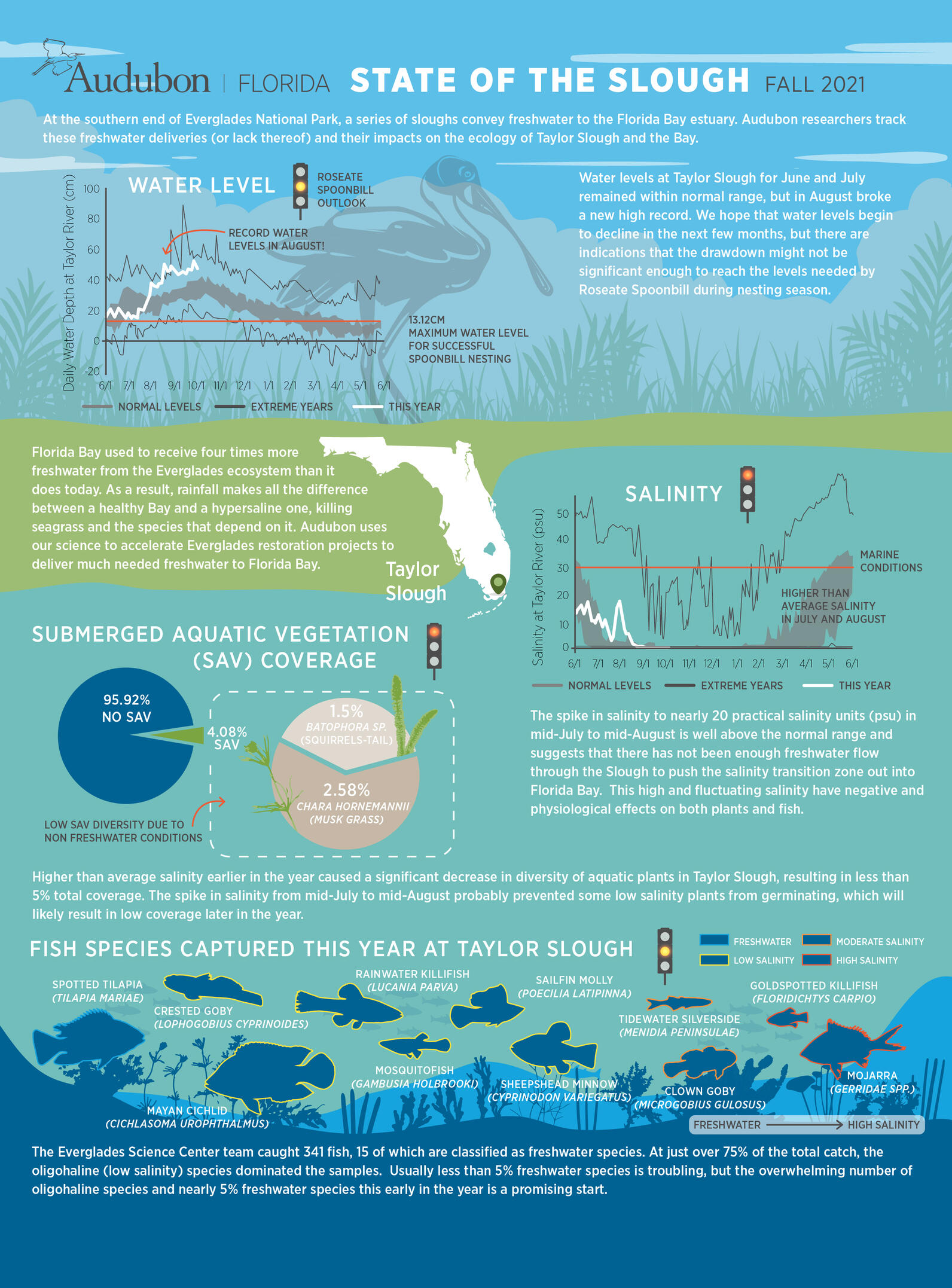Audubon Florida has released its semi-annual analysis describing water, salinity, fish, submerged aquatic vegetation, and Roseate Spoonbill impacts in South Florida. The State of the Slough reflects data collected by the Everglades Science Center team from June through September of 2021.
At the southern end of Everglades National Park, a series of wetland sloughs convey freshwater to the Florida Bay estuary. Audubon researchers track these freshwater deliveries (or lack thereof) and their impacts on the ecology of Taylor Slough and the Bay. This data provides critical feedback to Everglades restoration — measuring whether restoration efforts are going in the right direction and recommending how water management could improve.
Higher than average salinity earlier in the year caused a significant decrease in the diversity of aquatic plants in Taylor Slough, resulting in less than 5% total coverage. A spike in salinity from mid-July to mid-August prevented some freshwater aquatic plant species from germinating. Data from the Everglades Science Center is also showcasing how sea-level rise is contributing to more saline conditions in Taylor Slough.
Sea level rise is also affecting the success of Roseate Spoonbill nesting, due to water levels being too high during foraging events for nesting birds.
“Water levels at Taylor Slough for June and July remained within normal range, but in August broke a new high record,” explains Alexander Blochel, Senior Biologist at the Everglades Science Center. “We hope that water levels begin to decline by the end of next month, but this might not be the case due to the large amount of rain South Florida has experienced recently, just before the beginning of the dry season in December. There are indications that the drawdown might not be significant enough to reach the levels needed by Roseate Spoonbill during nesting season. But we’re hopeful that this year fresh water and water levels will be optimum for the southern Everglades ecosystem,” Blochel concluded.
If Florida Bay does not receive enough freshwater from sheetflow through the Everglades and rainfall, the bay can become hypersaline, increasing the likelihood of ecosystem decline and collapse. Data shows that this natural system used to receive up to four times more freshwater from the greater Everglades ecosystem than it does today. Audubon Florida’s team works tirelessly to accelerate Everglades restoration projects that will bring freshwater south to rehydrate Florida Bay.
The State of the Slough is available as a PDF here.
Audubon Florida protects birds and the places they need, today and tomorrow. Audubon works throughout the Americas using science, advocacy, education, and on-the-ground conservation. State programs, nature centers, chapters, and partners give Audubon an unparalleled wingspan that reaches millions of people each year to inform, inspire, and unite diverse communities in conservation action. A nonprofit conservation organization since 1905, Audubon believes in a world in which people and wildlife thrive.





